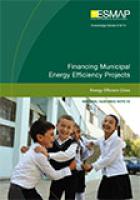Publications
Improving the energy efficiency of municipally owned buildings, such as schools and hospitals, and municipal infrastructure, such as public lighting, water supply, and district heating, offers budgetary savings on energy bills and a wide range of environmental and socioeconomic benefits.
The challenges that limit efficiency investments in municipal buildings and facilities include a lack of awareness and incentives, insufficient implementation capacity, and limited access to financing. All three challenges need to be addressed to scale up successful implementation of municipal energy efficiency projects.
This guidance note focuses on how municipalities can access financing for energy efficiency investments, particularly for projects in the following four areas: (i) indoor lighting; (ii) building retrofits: (iii) public lighting; and (iv) municipal utilities.
Related
Energy Efficient Cities Initiative




